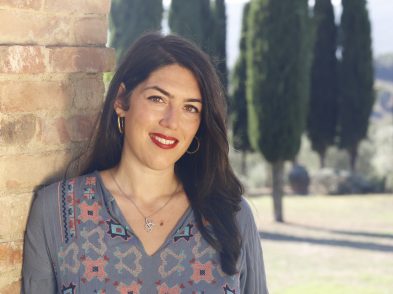As a linguist and bibliophile, a visit to Accademia della Crusca is for me akin to a trip to the Uffizi for art lovers. Established between 1582 and 1583, the Crusca is the world’s leading authority and research centre on Italian language. I was honoured to speak with the academy’s first female president, Nicoletta Maraschio, about the evolution of the Accademia della Crusca over time and multilingual influences on Italian.
Helen Farrell: Not everyone realises that the Accademia della Crusca is actually the oldest language academy in Europe. The name itself is distinctive. Could you explain its origins?
Nicoletta Maraschio: The name is a kind of joke. The symbology of the Accademia della Crusca joins together language and flour. These two items are essential in our lives. The aim of the Accademia is to seek the fior fiore (ed. the very best) of flour, while our symbol is the frullone, the machine invented towards the end of the sixteenth century to sort the wheat from the chaff. Instead of taking the name Accademia del fior fiore di farina, a decision was made to name the academy after the item that was removed: the bran. That’s why I say there’s this jokey, farcical aspect, which was part and parcel of the academicians of that time. There’s another part to the naming of the Accademia, too. Prior to the foundation of the Accademia della Crusca, there was a group of men of letters in Florence called the ‘Brigata dei Crusconi’, who met informally and who wanted to keep their name. But while this jokey, farcical aspect exists, the Accademia has also done some serious work, too!
HF: Such as the famous Vocabolario degli Accademici della Crusca, for instance. What importance has this dictionary played in the history and development of the academy?
NM: The Vocabolario degli Accademici della Crusca was first printed in Venice in 1612, arousing both great interest and controversy. The Vocabolario was enormously successful around Europe and became the lexicographic model for other European academies in editing the dictionaries of their respective languages. Today, our efforts follow the model of the Oxford English Dictionary, offering online consultation and drawing from not solely literary sources, which was the method used in the dictionary of the Vocabolario. The Vocabolario is an important monument of the Italian language because of its constancy over time and the fact that so many different generations have contributed to its making.
HF: Would it be fair to say that the Vocabolario has had a unifying effect for the Italian language given the various dialects and multilingualism in Italy?
NM: Definitely. The Vocabolario was the only book of its kind to be distributed all over Italy. Firstly, there were the Italian vernaculars, then the various dialects. Having a tool like the Vocabolario, which unified everyone and acted as model of a shared language, proved fundamental over the years in shaping linguistic identity. On the other hand, it was criticized for being too Florentine-centric, particularly in terms of the sayings and populisms included in the Vocabolario. However, it was never intended to be aristocratic or classist; the Vocabolario simply aimed to reflect the written and the spoken language of its time.
HF: Am I right in understanding that Accademia della Crusca aims to safeguard the Italian language? What is the academy’s stance on new words entering the language and the evolution of Italian?
NM: Rather than ‘safeguard,’ I would say that the Accademia ‘tends to’ or ‘watches over’ the Italian language. At a conference I attended recently in Padua, a journalist said to me, ‘The Accademia is rather like the Constitutional Court,’ which I really like as a description! We’re a watchdog, a body that offers a guarantee, let’s say. As far as neologisms are concerned, the Accademia has a policy of great openness. In the twentieth century, we know that almost 50 percent of Italian lexicon changed, while basic terminology like pane, tavolo and casa date to the fourteenth century, coinciding with Dante’s words. It was thanks to science, new forms of communication and new boundaries that the Italian language became more enriched in the 1900s. It is a positive step when languages change, and they should be given the possibility to evolve over time. What is important is monitoring this change and spreading a better awareness of language—this is a fundamental aim of Accademia della Crusca.
HF: Can you tell me about the other aims of the academy?
NM: An underlying policy of the Accademia today is encouraging multilingualism: knowing languages, so English, yes, but other languages, too. And especially having a good knowledge of and promoting one’s own language: Italian. Our website is a tool we use to monitor neologisms, with the help of our colleagues at the University of Rome. The Accademia is fortunate to be able to draw upon a network of scholars, both Italian and foreigners, a network that enables us to be able to monitor the Italian language within Italy and beyond our national boundaries, too.
HF: One of the distinguishing features of the Accademia della Crusca, from its beginnings, continues to be Italians and non-Italians working together for the good of language. What does this foreign presence give to the Accademia?
NM: It lends an incredible wealth to the study of language as well as its observation. Our non-Italian colleagues bring different methodologies and ways of looking at things, which enriches the Accademia’s practices. We are working on a project called Osservatorio degli italianismi nel mondo (Observatory of Italianisms around the world), which is being managed by German academician Harro Stammerjohann, author of La lingua degli angeli, a book that looks at the diffusion of Italian and Italianisms around the world.
HF: What does it mean for the Accademia to have its first female president?
NM: Of course I hope that I was chosen for other reasons, not my gender! Since today we women have to juggle our family life and careers, we have certain organizational and mediation skills that men perhaps do not possess. There’s one more thing, too; often, women are more direct in their approach. Perhaps it was these aspects, namely, a drive and an ability to mediate and organise that led to my colleagues choosing me as president. I’ve been president for six years now, and I hope that I haven’t disappointed anyone!
Tours around the Accademia della Crusca are held in English every first Sunday of the month. For more information about the Accademia della Crusca, see www.accademiadellacrusca.it/en.








